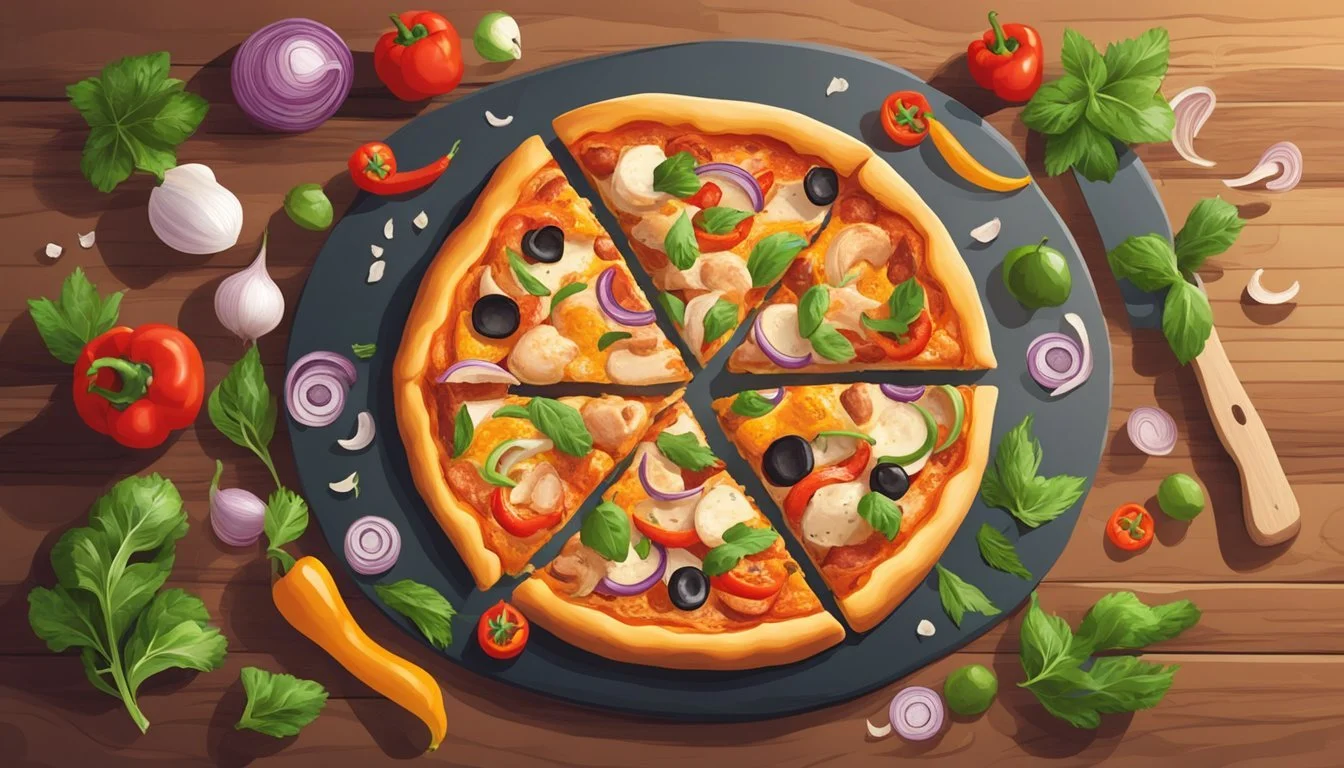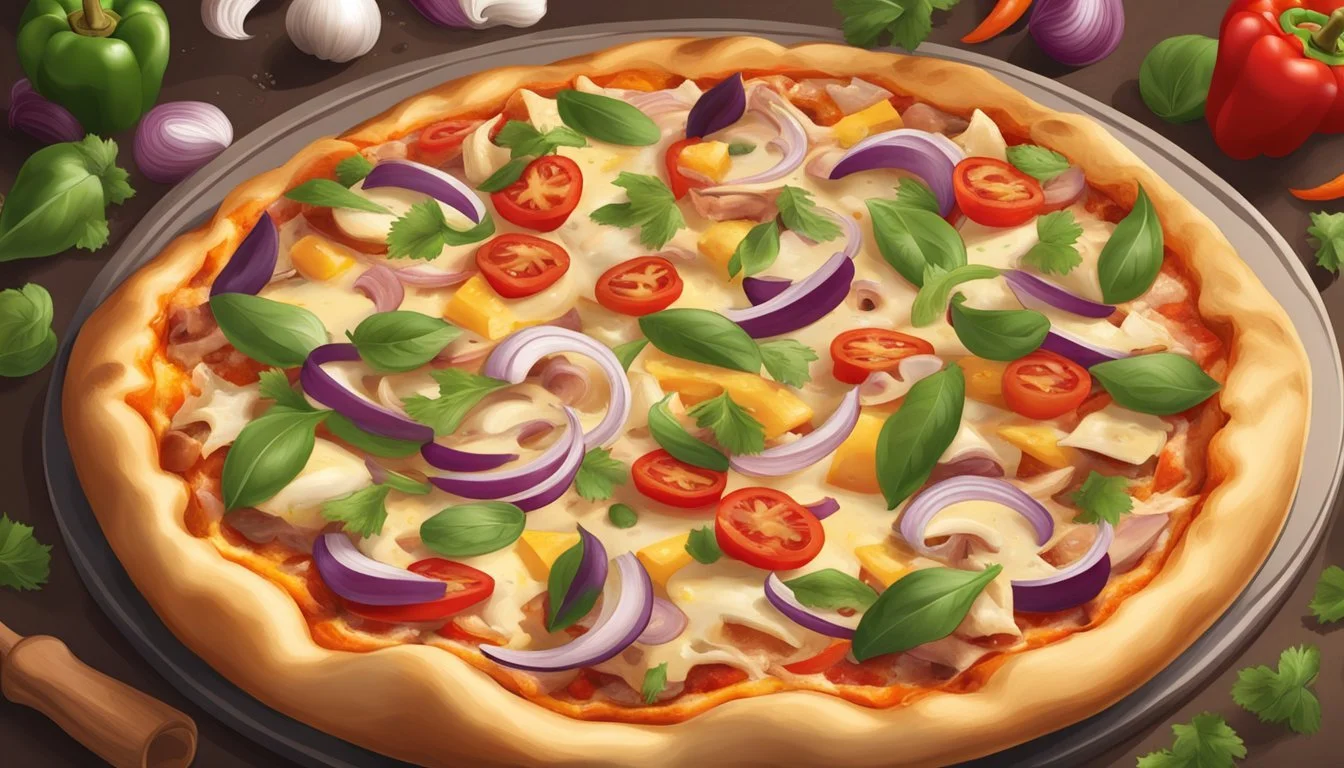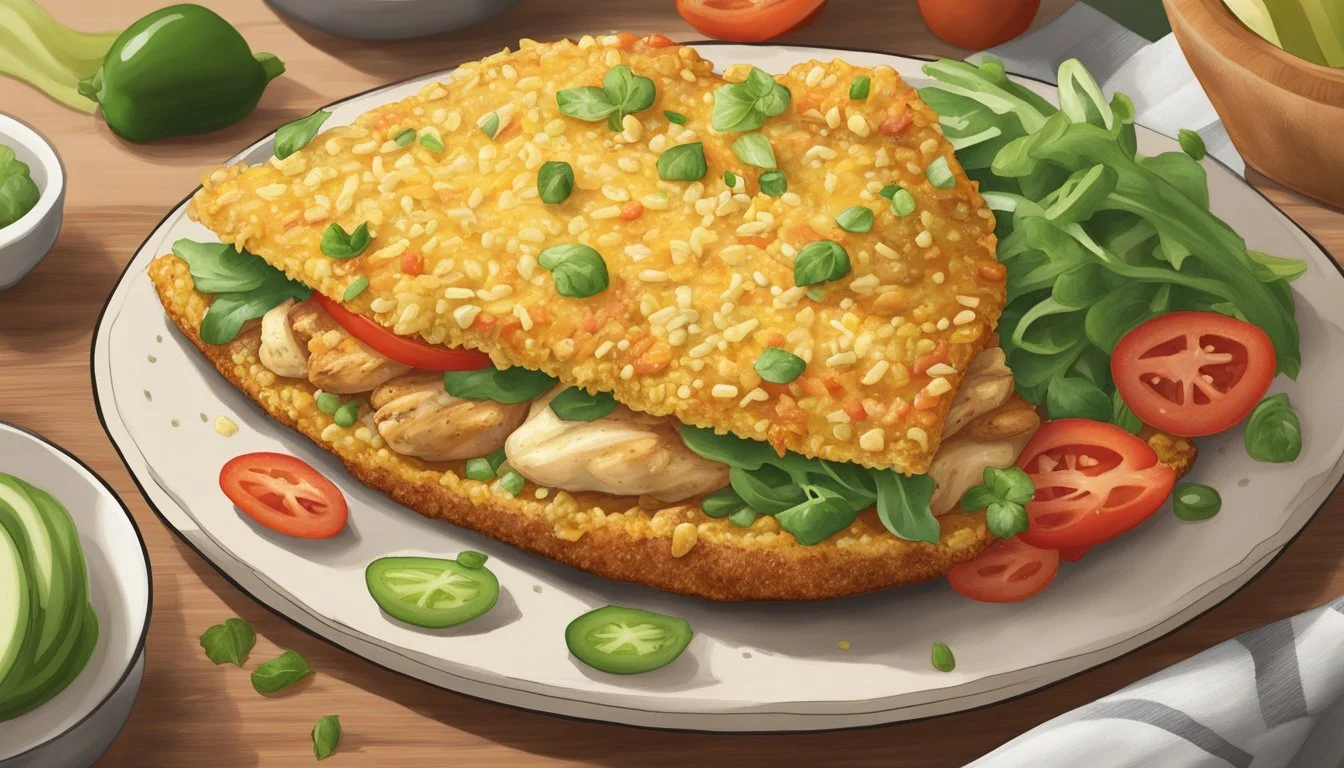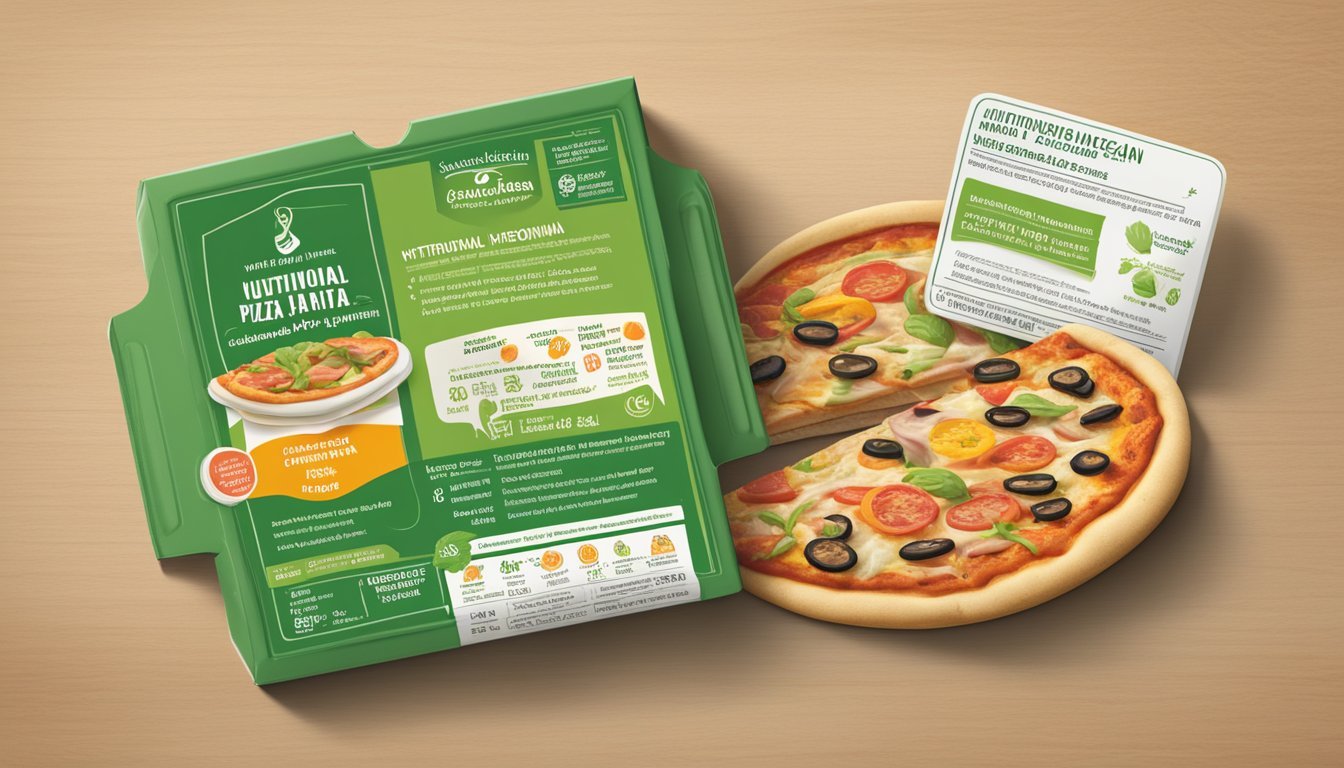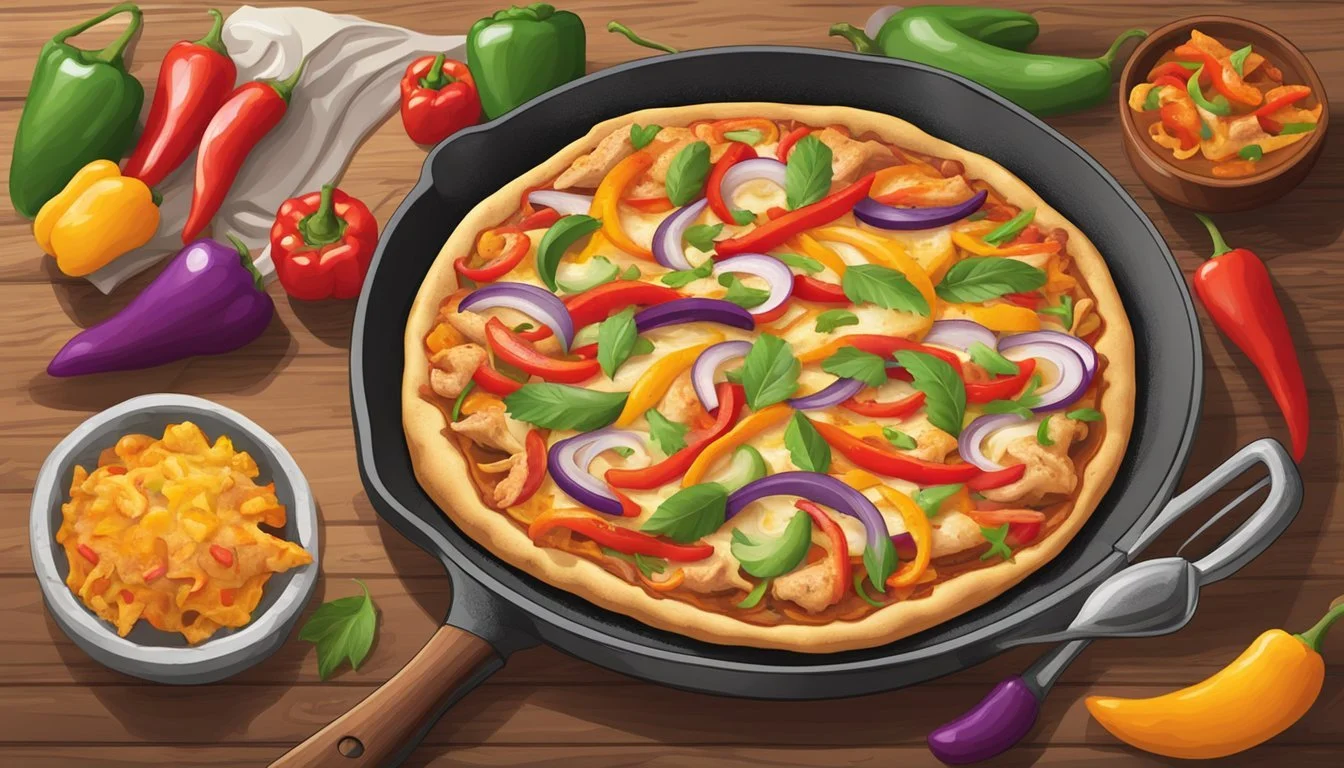Is Chicken Fajita Pizza Vegan?
Understanding Its Ingredients
When it comes to pizza, (What wine goes well with pizza?) the term 'vegan' implies that the dish contains no animal products or by-products, including meat, cheese, and often times, the dough if it's made with dairy or eggs. A chicken fajita pizza typically features ingredients such as chicken, cheese, and occasionally, a creamy sauce—all of which are non-vegan. Therefore, a traditional chicken fajita pizza is not suitable for those adhering to a vegan diet.
However, the increasing popularity of plant-based eating and events like Veganuary have inspired many food establishments and home cooks to craft vegan versions of beloved dishes, including pizza. Vegan chicken fajitas, for instance, utilize plant-based proteins to mimic the texture and flavor of chicken, while dairy-free cheese substitutes and vegan-friendly crusts accommodate the diet's restrictions. Consequently, a chicken fajita pizza can be made vegan by making essential substitutions with these animal-free alternatives.
These adaptations ensure that the essence of fajita—a term that traditionally refers to grilled meat served on a flour or corn tortilla—can still be enjoyed without animal products. Spices such as cumin, chili powder, and paprika, which are key to fajita seasoning, are inherently vegan and can be used to season the plant-based proteins. With the culinary innovation of vegan products, enjoying a chicken fajita pizza is possible for vegans, provided that all the ingredients used are compliant with vegan standards.
Understanding Veganism
Veganism is a dietary and lifestyle choice where individuals abstain from using animal products, particularly in diet. Vegans seek alternatives for meat, dairy, and other animal-derived substances, often advocating for ethical, environmental, and health reasons.
Health Implications: Many people adopt a vegan diet for perceived health benefits, as it is often rich in vegetables, fruits, legumes, nuts, and seeds. These foods are sources of essential nutrients and plant-based proteins. Vegans may be at a lower risk for certain health conditions, but must also be mindful to consume a well-balanced diet to avoid nutritional deficiencies.
Comparison to Vegetarianism: Unlike vegetarians, who may consume dairy and eggs, vegans exclude all forms of animal exploitation and cruelty for food, clothing, or any other purpose. Both diets can be healthy, but veganism requires careful planning to replace nutrients typically found in animal products.
Plant-Based Proteins: Vegans often incorporate a variety of plant-based proteins such as beans, lentils, tofu, tempeh (What wine goes well with tempeh?), and seitan (What wine goes well with seitan?) to fulfill their protein needs. These proteins are not only vital for health but also for maintaining muscle and overall body function.
Dietary Choice Animal Products Plant-Based Proteins Ethical Aspect Vegan Excluded Emphasized Central focus Vegetarian Limited Included Varied focus
Veganism is more than a diet; it's a comprehensive lifestyle choice. When considering veganism, one should research and consult health professionals to ensure a balanced and nutritious diet is maintained.
Ingredients Breakdown
When creating a vegan chicken fajita pizza, the ingredient selection is crucial to match the traditional flavors while adhering to vegan standards. This section will discuss the primary components typically found in a chicken fajita pizza and how they can be adapted to a vegan-friendly version, including alternatives for protein and additional flavorings.
Primary Components
Chicken Fajitas: Traditional chicken fajitas are not vegan as they contain poultry. Vegan versions use alternatives like soy curls, oyster mushrooms, or tofu to mimic the texture and flavor of chicken.
Onions and Peppers: Common in fajita recipes, these vegetables add a crisp texture and sweetness. They are naturally vegan and form the base of the fajita topping.
Vegan Alternatives
Protein Substitute: Animal protein is substituted with plant-based options:
Soy Curls: Rehydrated in a flavorful broth, they provide a meaty texture.
Oyster Mushrooms: Marinated and cooked, these mushrooms offer a chewy texture similar to chicken.
Tofu: Pressed and seasoned well, tofu can be a substantial protein addition.
Cheese Substitute: Vegan cheese made from nuts or soy can be used to give the melty, gooey texture expected on a pizza.
Sour Cream: Vegan sour cream, often made from soaked cashews or tofu, adds a creamy and tangy finish.
Additional Flavorings
Marinade: A mixture of lime juice, garlic powder, cumin, smoked paprika, and other spices can be used to infuse the vegan protein with traditional fajita flavors.
Salsa, Cilantro, Lime: Fresh elements like salsa, chopped cilantro, and a squeeze of lime juice are integral for that zesty kick.
Non-Vegan Ingredients
To ensure the pizza is vegan, the following conventionally non-vegan ingredients should be avoided or substituted:
Instead of chicken, use the plant-based proteins mentioned above.
Dairy cheese is replaced with a vegan version.
Traditional sour cream is substituted with a vegan alternative made from plant sources.
Check that any store-bought sauces or seasonings do not contain animal products like dairy or meat extracts.
Fajitas Preparation Techniques
Preparing vegan fajitas involves several important steps to ensure the dish is flavorful, satisfying, and retains the spirit of traditional fajitas. From selecting appropriate cooking methods to understanding the intricacies of meal prep and storage, each aspect contributes to the final dish's success.
Cooking Methods
Vegan fajitas can be prepared using various cooking methods to achieve the characteristic sear and tenderness. A cast iron pan or skillet is commonly used on a stovetop to sauté the essential ingredients like peppers and onions. For vegan chicken fajitas, ingredients such as dehydrated soy curls or marinated oyster mushrooms can be briefly grilled or baked, providing a substantial filling that mimics the texture of traditional chicken.
Stovetop: Sauté peppers and onions until tender-crisp.
Grill: Offer a smoky flavor to vegan chicken alternatives.
Bake: Achieve a slightly caramelized texture for a variety of vegetables.
Prep and Cook Times
Vegan fajitas are known for their quick and easy preparation, making them suitable for weeknight dinners.
Prep Time: 20-30 minutes (including chopping vegetables and marinating vegan chicken substitutes)
Cook Time: 10-15 minutes (for sautéing or grilling the ingredients)
Total Time: 30-45 minutes
It's essential to allocate time for marinating vegan chicken to infuse flavors thoroughly.
Serving Recommendations
Vegan fajitas are traditionally served with an array of condiments and sides that complement the dish.
Tortillas: Warm them up to wrap the fajitas.
Rice and Beans: Serve as sides for a hearty meal.
Guacamole and Avocado Slices: Add creaminess and a rich taste.
These additions not only provide texture and flavor but also ensure a balanced nutritional profile.
Meal Prep and Storage
Meal prep and storage for vegan fajitas are simple and can significantly save time.
Meal Prep: Chop and marinate ingredients in advance.
Freeze: Store separated ingredients in freezer-friendly bags or containers.
Reheat: Use a skillet to maintain the fajitas' texture when reheating.
Properly storing and reheating ingredients ensures delicious and fresh-tasting fajitas every time.
Customizing Your Fajita Pizza
Creating a vegan fajita pizza offers a variety of options to tailor the dish to personal tastes or dietary needs. Substituting traditional toppings with plant-based alternatives can transform this favorite into a vegan delight, without compromising on flavor or texture.
Vegetable Variations
The backbone of any fajita, pizza included, is the vegetable medley. The classic combination typically includes:
Bell peppers: red, green, and yellow for a colorful and flavorful mix.
Onions: white or red, sliced thinly for a subtle sweetness.
Slices of tomatoes and avocado to add freshness and creaminess.
These vegetables can be sautéed in olive oil until just tender, preserving their natural crispness.
Protein Choices
For a vegan fajita pizza, it's essential to replace animal proteins with suitable alternatives. Consider these meat substitutes:
Jackfruit or seitan, marinated in fajita seasoning.
Chickpeas or tempeh for a protein-packed bite.
TVP (Textured Vegetable Protein), which closely mimics cooked chicken when seasoned well.
These can be prepared with a fajita spice blend and a bit of olive oil to enhance their flavors.
Alternative Dietary Options
Accommodating varying dietary needs also includes the use of gluten-free bases; either corn tortillas or gluten-free flour tortillas work well. Here's a quick guide to vegan and gluten-free modifications:
Vegan cheese instead of traditional cheeses, melted to achieve that quintessential pizza experience.
Vegan sour cream and guac for dolloping on top just before serving.
Bases: Corn tortillas for a gluten-free option or a prepared gluten-free pizza dough.
Remember, a successful fajita pizza is all about the balance of flavors and textures, from the savory crunch of the vegetables to the rich creaminess of the vegan cheese.
Vegan Fajita Pizza Recipe
Creating a vegan fajita pizza requires attention to both a robust flavor profile and an adherence to vegan ingredients. The use of traditional fajita components like peppers, onions, and a variety of spices will ensure the pizza retains the essence of fajitas, while vegan substitutes for cheese and sour cream will maintain the dish’s plant-based integrity.
Dough and Base Preparation
To start, one will need to prepare the pizza dough. For a gluten-free option, choose a gluten-free flour blend suitable for yeasted doughs. The dough can be made from scratch or purchased pre-made for convenience. It should be:
Rolled out to a 12-inch circle on parchment paper.
Pricked with a fork to prevent bubbling.
Pre-baked for approximately 8 minutes at 450°F (232°C) before adding toppings.
For the base, blend black beans with salsa to create a spread. This will act as the 'sauce' for the pizza, substituting traditional pizza sauce which may not align with the fajita theme.
Topping Selections
As for toppings:
Vegetables: Sauté sliced onions and a mix of bell peppers until just tender. They should be brightly colored and slightly crisp.
Protein: Use vegan chicken-style strips or marinated mushrooms for a hearty texture. Vegan chicken fajitas strips can be marinated in taco seasoning, lime juice, and other fajita spices.
Vegan Cheese: Sprinkle a generous amount of vegan cheese shreds over the base. Choose a cheese that melts well.
Extra Flavorings: Consider adding elements like hot sauce or vegan sour cream for extra flavor.
Here is a structured list of topping ingredients:
Vegetables Protein Options Additional Flavors Sliced onions Vegan chicken-style strips Vegan sour cream Bell peppers Marinated mushrooms Taco seasoning - - Hot sauce
Baking and Final Touches
After assembling the toppings:
Bake: Place the pizza back into the oven. Bake until the crust is golden, and the cheese has melted — typically 10-15 minutes more.
Final Touches: Before serving, optional additions such as a drizzle of hot sauce, dollops of vegan sour cream, or a sprinkle of fresh cilantro can add layers of flavor and freshness.
A properly baked vegan fajita pizza offers a delightful fusion of traditional fajita flavors with the comforting, crowd-pleasing format of a pizza. Served in wedges, it's an enjoyable entree that doesn't compromise on taste for those following a vegan lifestyle.
Nutritional Information
This section provides detailed nutritional information focusing on the caloric content and macronutrient composition of chicken fajita pizza with a vegan twist.
Caloric Content
The caloric content of vegan chicken fajita pizza will vary depending on the specific ingredients used. A typical slice of vegan fajita pizza may range from 250 to 300 calories.
Macronutrients
The macronutrient profile of a vegan chicken fajita pizza includes a balance of proteins, carbohydrates, and fats.
Proteins: Vegan meat substitutes like tempeh or textured vegetable protein, used in place of chicken, contribute to the protein content, which may be around 10 to 20 grams per serving.
Carbohydrates: The crust and vegetables add to the total carbohydrates, with an estimated 30 to 40 grams per slice.
Fats: Healthy fats are primarily derived from the plant-based cheese and cooking oils. Each slice might contain 5 to 15 grams of fat, with variations based on the type of cheese and oils used.
Conclusion
A chicken fajita pizza is not inherently vegan due to its traditional components—chicken and cheese—which are animal-derived products. However, vegan versions of this dish are certainly achievable and can be both savory and satisfying. To create a plant-based alternative, one would replace chicken with vegan protein options such as soy curls, marinated mushrooms, or a variety of vegetables. Vegan cheeses or nutritional yeast can serve as substitutes for dairy cheese.
This Mexican dish, known for its rich flavors, benefits from the fusion with Italian pizza to create a meal that is customizable and can easily satisfy different taste preferences. Consumers can choose from an array of vegetable toppings, vegan meats, and dairy-free cheeses to tailor the pizza to their liking.
For those interested in preparing a vegan chicken fajita pizza at home, the process is typically easy to make. Home cooks can take advantage of pre-made vegan crusts and cheese options readily available in markets, making the assembly quick and straightforward. Furthermore, this pizza offers generous room for adjustments and creativity in choice of toppings and sauces, in keeping with the essence of fajitas.
In summary, they can enjoy the essence of chicken fajita pizza in a vegan format that embraces the rich, savory qualities of a beloved Mexican dish while providing a satisfying culinary experience that respects their dietary choices.

